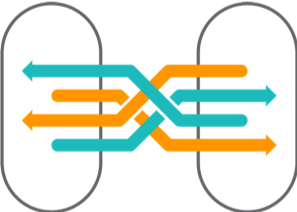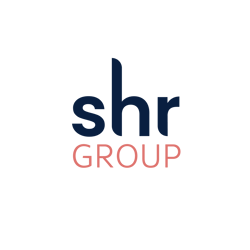Relying on well-integrated technology will be critical for hotels to operate more efficiently and drive revenue in our new, post-pandemic world.

Let’s face it: Moving forward, the hospitality operating model isn’t going to look the same as it did in 2019, pre-pandemic. Nearly all companies have reduced staff at both the corporate and property levels. To preserve profitability, hotels have learned to operate more efficiently – to do more with less.
Even when business travelers are given the green light to get back on the road and our hotel rooms start filling up again, these changes will undoubtedly remain in place. Now that managers have found ways to get by with less resources, they’ll continue to operate as lean as possible. One way they’ll do so is by relying on technology to handle manual tasks that previously were performed by staff members.
Take digital check-in, for example. As government guidelines forced hoteliers to increase social distancing and reduce physical contact with guests, operators scrambled to find new ways to check guests in. Now, most hotels have in place some way to greet the guest, collect payment and assign them a room without the need for human interaction. While this may not eliminate the need for a front-desk agent entirely, it frees them up to do other tasks.
As human interaction diminishes, technology will also increasingly be used to improve the guest experience all along their journey. With improved CRM technology, hotels today know more about their guests than ever before. This might pave the way for complex changes like serving up tailored packages during the booking experience and stocking the minibar with the guest’s favorite beverages, but it can also improve simpler tasks like confirmation emails and targeted marketing promotions for increased conversion.
In tandem with guest service, technology will be increasingly relied upon to help drive revenue. With fewer revenue managers on property, operators will rely more heavily on automated dynamic pricing built to adapt to real-time changes in supply and demand. Loyal guests tend to spend more, so personalized offerings will drive both loyalty and revenue. Dynamic room-type pricing will increase spend from guests who might choose a premium room type, upsells will help boost incremental revenue, and optimizing channel mix will help increase profitability through third-party distribution partners.
Tech Specs: Determining the Right Integration
Here’s the rub, though: All of these innovations rely not only on systems to automate everyday tasks, but well-integrated systems that are able to share data securely and in real time. The Property Management System, still considered a “hub” and the source of truth for hotels, holds key data on reservations, room types, guest profiles, and folio data that other systems must access to build better guest engagement and drive increased revenue. Ancillary systems must connect with each other, and ultimately with the PMS, to ensure access to the right data at the right time.
Without properly integrated systems, data tends to sit in various buckets, or silos, throughout your tech stack. For example, having thorough profile information on each of your past guests sitting in your CRM does no good when it’s not used to build targeted marketing campaigns. Integrating various historical and forward-looking data sources are essential for your rate strategy. Understanding which room types and which amenities your customers want to book most is a wasted effort if you can’t present those options to the guest through the CRS and booking engine at time of booking.
Sharing this critical data among systems has impeded hotels forever. Integrating systems so they can communicate and share data in real time has always been incredibly costly and time consuming.
Let’s look at the different types of system integrations common today:
– File-based integrations
The simplest way to send data from one system to another is through a file transfer. Think of your typical CSV file made up of columns filled with data. The downside here is that data only goes one way – from Point A to Point B – and does not continuously flow in real time.
– One-way static API sends
One step better than file-based communication, some systems allow you to build to their API and either send or receive data in one direction in batches. One of the endpoints of the API enables users to send data directly at a set time, maybe immediately after check-in or at the end of each day.
– Two-way API streaming
Two-way integrations done by API allow systems to communicate and share data in real time. Reports and information are always up to date and systems can link reservations with guest profiles, for example, in real time.
A proper integration between systems almost always requires the data to flow both ways, in what is commonly referred to as a “two-way integration.” For example, a two-way integration between your PMS and your RMS allows the PMS to send inventory and reservation data to the RMS, and also allows your RMS to send pricing recommendations for each room type and each segment back to the PMS. In the process, field and files are matched so the data is shared cleanly and not lost in translation. Bi-directional flows of transactional and guest data throughout your technology stack is key to ensuring various systems can access the right data when they need it, thereby paving the way for innovation to happen in real time all along the guest journey.
Building a two-way integration starts with what are called Application Programming Interfaces, or APIs. Developers build to a host system’s API in order to access reservations data, guest profiles, room blocks and folio data. APIs also allow one system to tap in the features of another system, allowing hoteliers to take action.
Unlock Your Data to Drive Revenue
Without properly integrated technology sharing data in real time, hoteliers are left in the dark. Take, for instance, the three systems commonly responsible for revenue generation: the CRM, which handles guest recognition; the CRS, which distributes room rates and inventory to various channels across the web; and the RMS, which handles yielding and forecasting. Each of these systems need to share data bi-directionally and in real time in order to get the most out of your data. When data is shared among these systems, or from these systems into a central location, hoteliers can unleash the power of analytics and machine learning to start making smarter and more profitable business decisions.
At the very basic level, shared data will allow operators to be more efficient. No longer will hoteliers be relying on “swivel-chair integrations,” meaning they’re bouncing back and forth manually entering data in multiple places.
Technology will be key to your post-pandemic recovery – it will allow you to control labor costs and unlock new ways for you to drive revenue and build better guest connections. In a cut-throat environment where you and your neighboring hotels are competing for the same slowly returning business, you must rely on technology to stand apart and get ahead. Be sure you’re evaluating your tech stack appropriately and understanding the true value of properly integrated systems.
by Jason Freed
Check out our deeply integrated, suite of revenue generating applications: CRS, CRM, and RMS.


